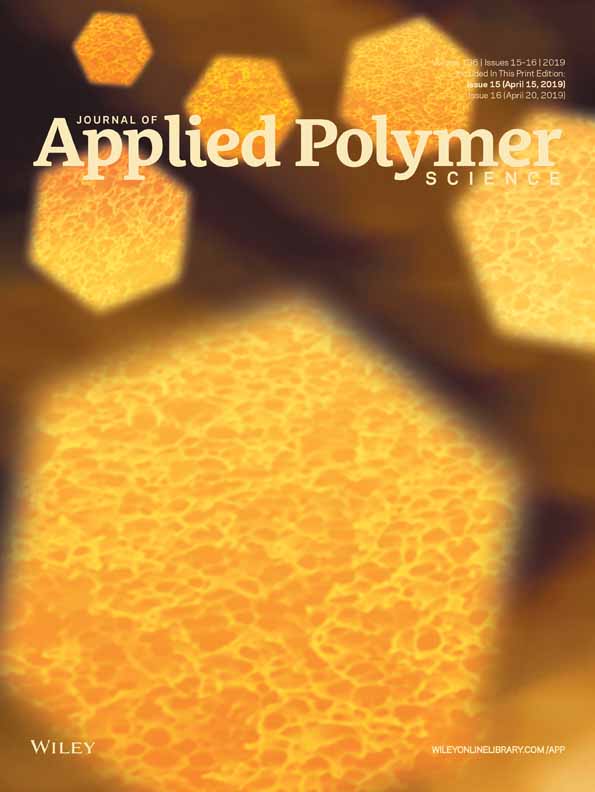Relationship on structure and properties of polyurethane modified Diels–Alder addition polymer
ABSTRACT
A series of linear and crosslinked polyurethane modified materials were prepared by Diels–Alder cycloaddition reaction. Based on raw materials, some novel equations were designed and effects of equation parameters on the mechanical properties of modified material were explored. It was demonstrated that tensile strength of modified materials and elongation at break were changed from 3.68 to 18.71 MPa, 200 to 866%, respectively. In addition, the optimal reaction temperature of retro-Diels–Alder (r-DA) reaction was determined by differential scanning calorimeter (DSC). Gel permeation chromatography (GPC) and tensile experiments were used to characterize the properties of repolymerized material after degradation. The results indicated the optimal temperature of r-DA for linear and crosslinked polyurethane modified materials is 127 and 150 °C. Moreover, after decomposed, the product was slowly repolymerized at 60 °C, and can more effectively restore material strength under the action of the solvent to achieve self-healing effect. © 2018 Wiley Periodicals, Inc. J. Appl. Polym. Sci. 2019, 136, 47355.




